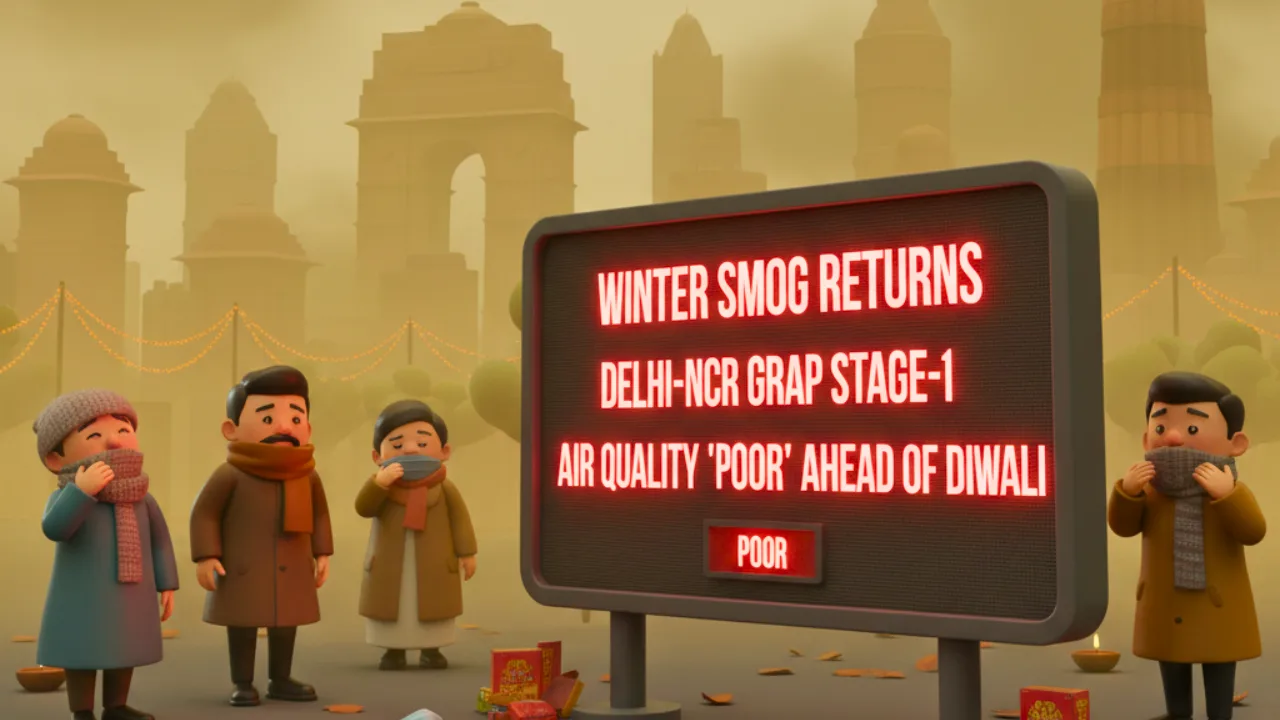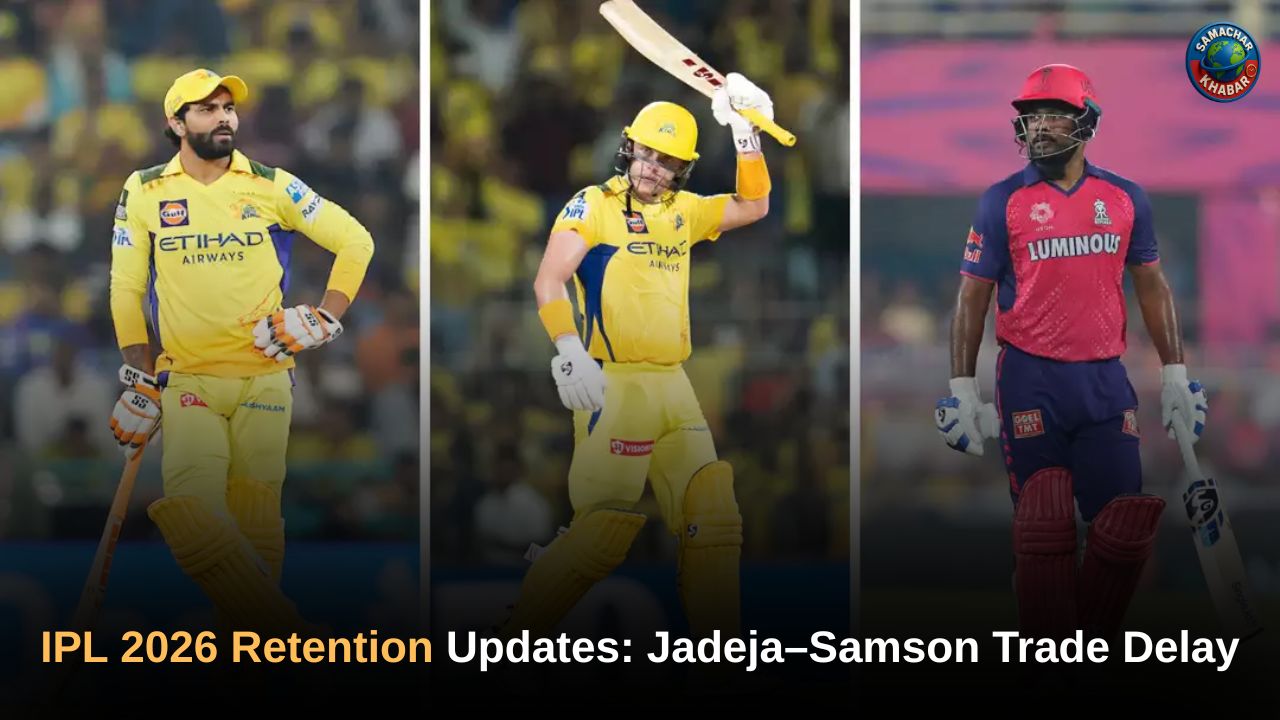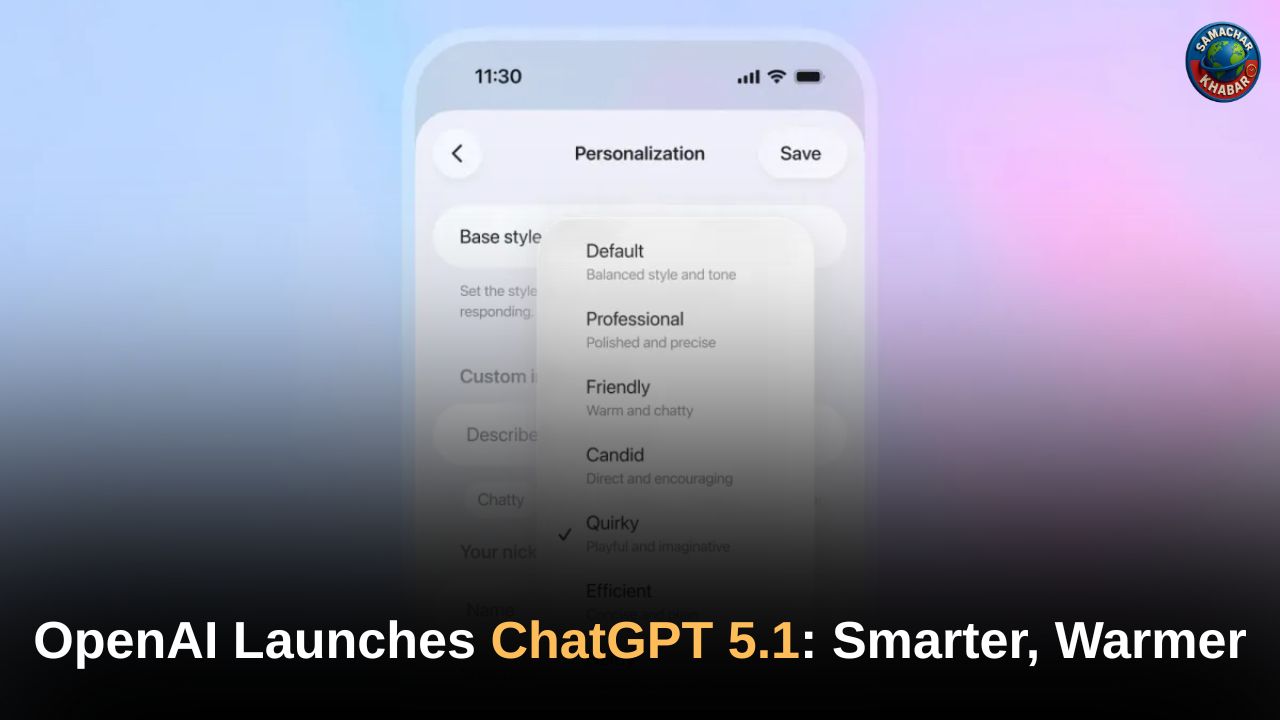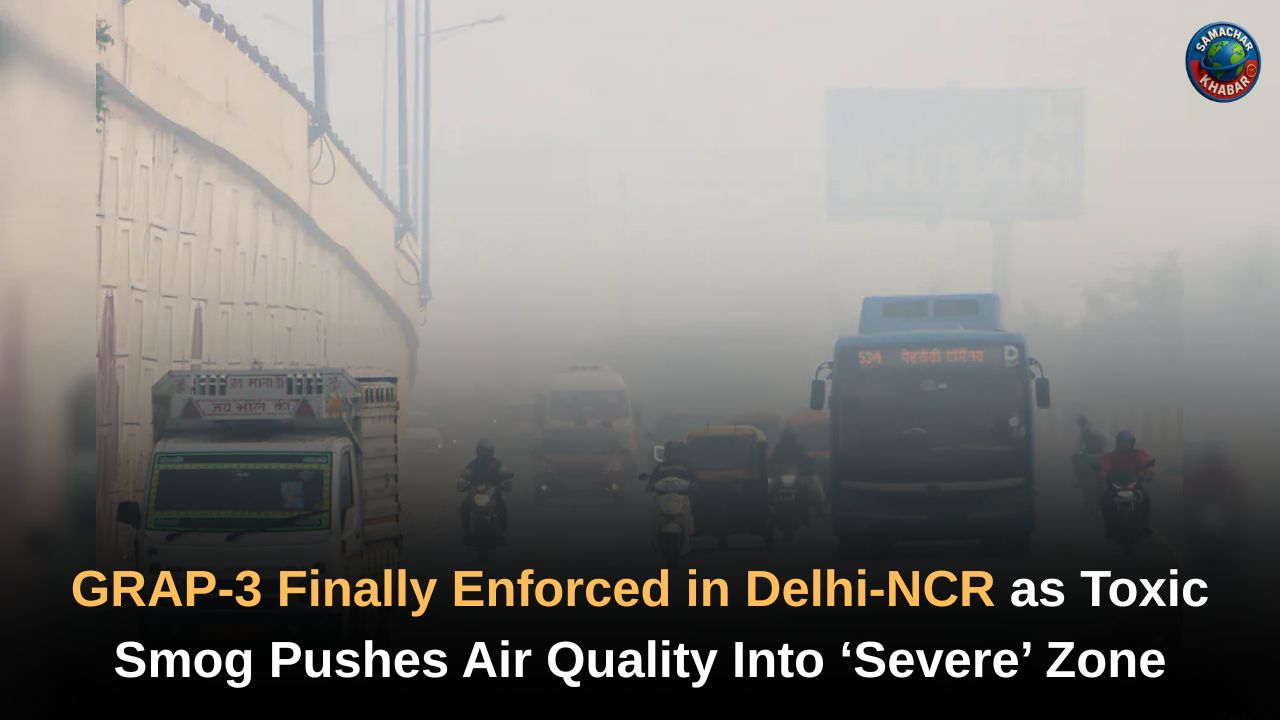New Delhi , 15 October 2025: GRAP Stage-I: The Commission for Air Quality Management (CAQM) has invoked Stage-I of the Graded Response Action Plan (GRAP) across the entire National Capital Region after Delhi’s daily average Air Quality Index (AQI) slipped into the ‘Poor’ category.
The Sub-Committee on GRAP ordered all 27 measures under Stage-I to be implemented in earnest from 8:00 AM on 15 October 2025, citing real-time data from the Central Pollution Control Board (CPCB) and forecasts from the India Meteorological Department (IMD) and the Indian Institute of Tropical Meteorology (IITM).
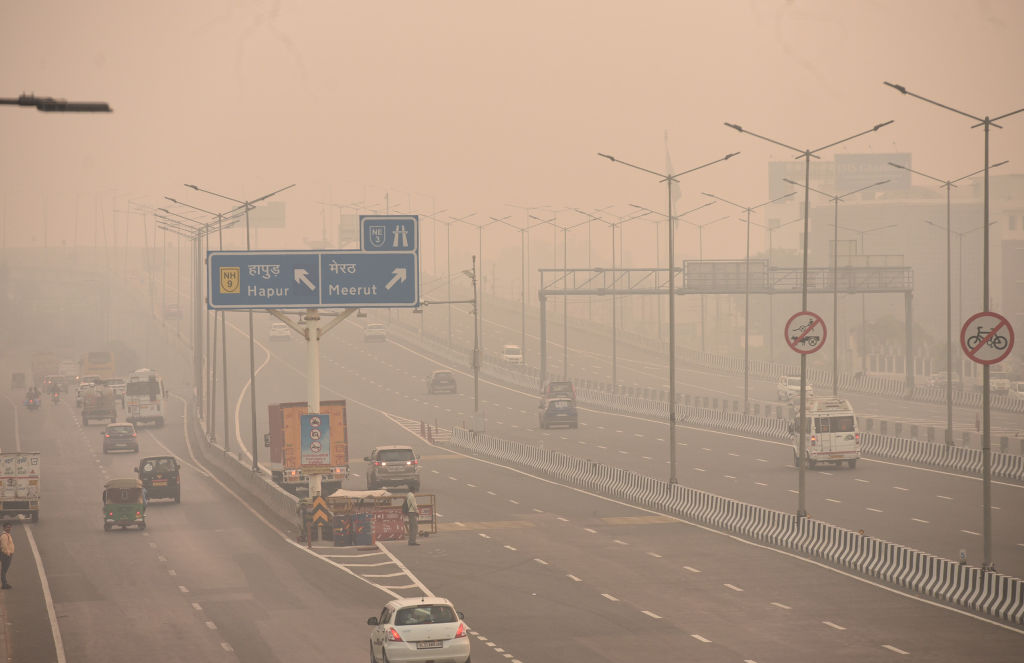
This activation is the season’s first formal anti-pollution response in the capital, coming just a week before Diwali and topping an AQI reading that moved from 211 to a reported daily average of 234. Authorities warned that calm winds and stagnant weather could trap pollutants in the coming days IITM forecasts even flagged the potential for AQI to rise above 250 by month-end if conditions persist.
Why GRAP Stage-I was triggered
According to a release by the Press Information Bureau , CAQM’s Sub-Committee reviewed a notable dip in air-quality parameters over the previous 24 hours and found meteorological projections unfavourable. With Delhi’s AQI now in the 201–300 range that defines Stage-I (“Poor”), the Sub-Committee unanimously ordered implementation of all 27 actions under Stage-I across Delhi and NCR districts of Uttar Pradesh, Haryana, Rajasthan and Punjab.
The commission made clear it will closely monitor air-quality trends and review the situation regularly.
GRAP 1 : Key measures now in force

Stage-I of GRAP is built around dust control, stricter waste management, curbs on polluting emissions, and active enforcement across multiple sectors. The order instructs district administrations, pollution control boards and municipal bodies to take the following steps without delay:
Construction & Dust Control
- Enforce dust-mitigation measures at all Construction & Demolition (C&D) sites and ensure sound environmental management of C&D waste.
- Do not permit C&D activities for projects with plot size ≥ 500 sqm that are not registered on the respective state/GNCTD web portals or that fail remote-monitoring requirements (Directions Nos. 11–18 dated 11.06.2021).
- Ensure C&D materials are properly covered and contained, and transported only in covered vehicles.
- Use anti-smog guns at C&D sites proportional to the project area, and intensify anti-smog guns, water sprinkling and dust suppression in road construction, widening, repair and maintenance projects.
- Carry out mechanized sweeping and water sprinkling on roads; scientifically dispose of collected dust at designated landfills.
Waste & Landfill Management
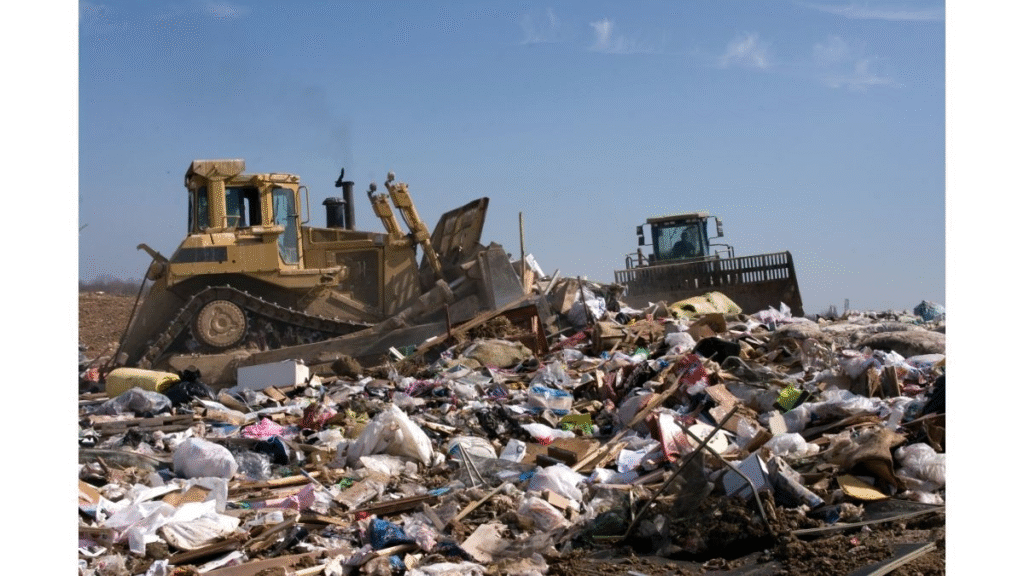
- Strictly ban open burning of biomass, leaves, garbage and municipal solid waste; enforce maximum Environmental Compensation (EC) for violations per NGT orders (OA 21/2014).
- Maintain strict vigil to ensure no burning incidents at landfill/dumpsites.
- Ensure regular lifting and scientific disposal of MSW, C&D and hazardous wastes from dedicated dump sites, and stop illegal dumping on open land.
Vehicular & Traffic Controls
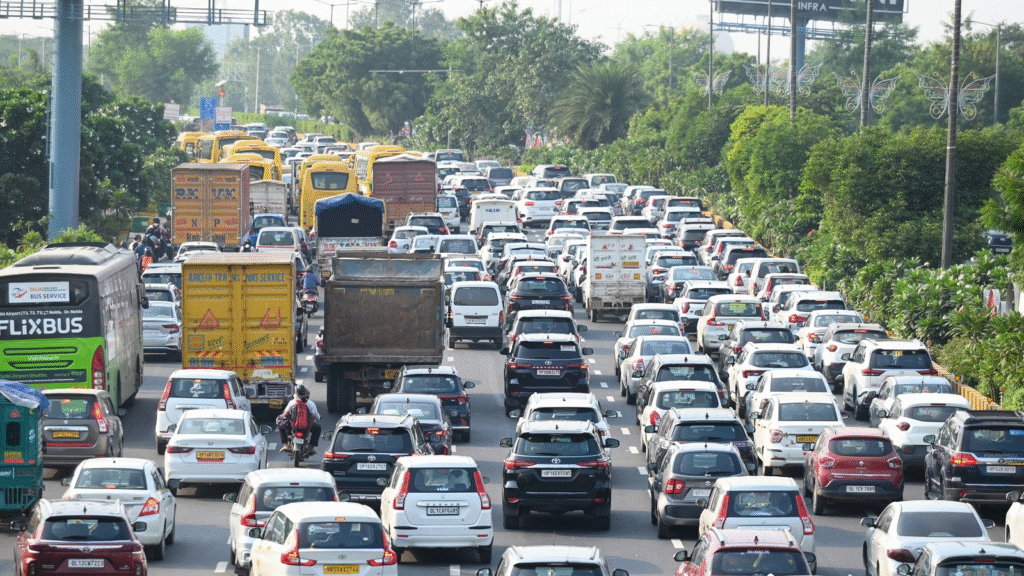
- Ban diesel vehicles older than 10 years and petrol vehicles older than 15 years from plying.
- Strictly enforce Pollution Under Control (PUC) norms; stop visibly polluting vehicles : impound or levy maximum penalties where necessary.
- Deploy traffic police at heavy-traffic corridors and congestion-prone intersections; enforce engine-off rules at red lights and avoid vehicle idling.
- Enforce the Supreme Court order diverting non-destined truck traffic via Eastern and Western Peripheral Expressways.
Industry, Power & Fuel Use
- Stringently enforce pollution control regulations in industries, brick kilns, hot-mix plants and thermal power stations; ensure only approved fuels are used and take closure action for violations.
- Ensure regular collection and safe disposal of industrial waste.
- Enforce the ban on coal and firewood as cooking fuel in tandoors, roadside eateries, hotels and restaurants : requiring electricity, gas or other clean fuels only.
- DISCOMs must minimise power supply interruptions to reduce dependence on diesel generator (DG) sets; diesel generators must not be used as regular power sources.
Public Communication & Enforcement
- Use social media, bulk SMS and mobile apps to disseminate air-quality updates, control room contact details and complaint channels; ensure quick redressal of reports via 311 App, Green Delhi App, SAMEER App and similar platforms.
- Encourage offices to start unified employee commuting schemes to reduce road traffic.
- Report violations to CAQM’s helpline and local enforcement agencies.
Citizen Charter: How residents can help

- CAQM has urged citizens to follow the Stage-I Citizen Charter to reduce exposure and slow deterioration of air quality:
- Keep vehicle engines tuned and tyres properly inflated; maintain valid PUC certificates.
- Turn off engines at signals and avoid unnecessary idling.
- Prefer hybrid or electric vehicles where possible and refrain from using over-aged vehicles.
- Avoid littering and open dumping; report polluting activities promptly via official apps.
- Plant trees and celebrate festivals in an eco-friendly manner by avoiding firecrackers.
- A dedicated helpline : 1800-180-1708 has been publicised for reporting and assistance.
Experts and context
Environmental analysts welcomed the early intervention but warned that Stage-I is a short-term containment tool. Dr. Anumita Roychowdhury, Executive Director of the Centre for Science and Environment (CSE), described GRAP as “a band-aid,” stressing that lasting relief depends on tackling root causes such as stubble burning and improving interstate coordination. Last winter, Delhi and the region recorded more than 50 ‘Severe’ days, with massive health and economic costs a cautionary reminder of the stakes if pollution worsens after Diwali.
What to watch next
Authorities will continue to review air-quality readings and forecasts from CPCB, IMD and IITM. With Diwali less than a week away, the coming days are critical: sustained calm winds and clear skies could trap emissions and push AQI higher. Citizens and agencies alike have been urged to cooperate fully with the 27-point Stage-I plan to prevent escalation into “Very Poor” or “Severe” categories.
Also Read: Delhi’s ‘Saheli Smart Card’ Set to Transform Women’s Travel Freedom This Bhai Dooj
Bottom line: With GRAP Stage-I now active across the NCR from 8:00 AM on 15 October 2024, authorities have a comprehensive enforcement checklist at hand. The effectiveness of these measures will depend on rapid, coordinated action by agencies and active public cooperation as Delhi heads into the high-risk winter pollution season.
Discovering the Unique Knowledge of Tatvdarshi Sant Rampal Ji Maharaj Ji
Tatvdarshi Sant Rampal Ji Maharaj Ji has been sharing timeless spiritual wisdom that addresses the root causes of human suffering and guides seekers towards ultimate peace and enlightenment. His teachings focus on true devotion, understanding the essence of scriptures, and practical guidance for righteous living. Millions of devotees have benefitted from his knowledge, gaining clarity, inner peace, and a disciplined spiritual life.
For more authentic teachings and spiritual guidance, visit www.jagatgururampalji.org and subscribe to the YouTube channel: Sant Rampal Ji Maharaj for videos, discourses, and regular updates.
FAQs on GRAP Stage-I Implementation in Delhi-NCR 2024
1. What is GRAP Stage-I and why has it been implemented in Delhi-NCR?
The Graded Response Action Plan (GRAP) Stage-I is the first level of emergency pollution control measures enforced when Delhi-NCR’s Air Quality Index (AQI) reaches the “Poor” category (201–300). The Commission for Air Quality Management (CAQM) activated Stage-I on 15 October 2024 after Delhi’s AQI touched 234, signalling rising pollution levels ahead of winter.
2. What are the key restrictions under GRAP Stage-I in Delhi-NCR?
Stage-I includes 27 measures to curb pollution, such as strict dust control at construction sites, ban on open waste burning, checking over-aged vehicles, and enforcing PUC norms. It also requires mechanized road cleaning, anti-smog gun use, and monitoring of industrial emissions to reduce dust and vehicular pollution.
3. Which areas and agencies are responsible for enforcing GRAP Stage-I?
GRAP Stage-I applies to Delhi and the entire National Capital Region (NCR) including parts of Haryana, Uttar Pradesh, Rajasthan, and Punjab. Enforcement is led by CAQM, with support from municipal bodies, pollution control boards, traffic police, and district administrations.
4. What should citizens do during GRAP Stage-I?
CAQM’s Citizen Charter advises people to avoid using old or polluting vehicles, turn off engines at signals, refrain from open burning, and report violations via the Green Delhi App, 311 App, or SAMEER App. Citizens are also encouraged to use public transport, carpooling, and adopt eco-friendly practices during festivals.
5. How long will GRAP Stage-I remain in force?
GRAP Stage-I will remain active until air quality improves and AQI stays below 200 for several days. If conditions worsen and AQI crosses 300 (Very Poor), CAQM may escalate to Stage-II, imposing stricter curbs on industrial operations, construction, and vehicular movement.

